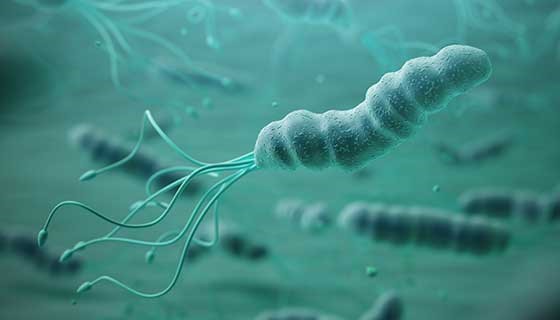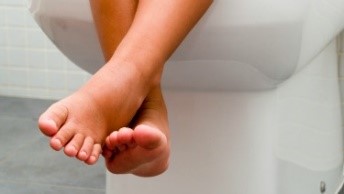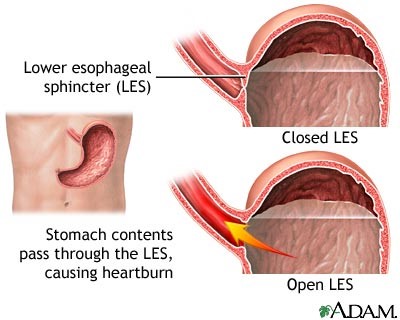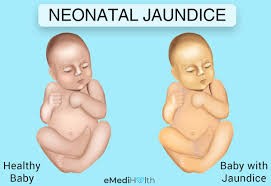VITAMIN D CHO TRẺ NHŨ NHI

VITAMIN D CHO TRẺ NHŨ NHI - Vitamin D Supplementation for Infants
Hope Alberta Weiler
School of Human Nutrition
McGill University
July 2017
Vitamin D thuộc nhóm tan trong mỡ (fat- soluble vitamin), chúng hiện diện dưới hai dạng Vitamin D3 ( cholecalciferol) và vitamin D2 hay (ergocalciferol) (1, 2). Trong việc tiêu hóa thì cả hai đều có dạng chuyển hóa tương đồng nhau (3). Sau khi sinh, trẻ sơ sinh và nhủ nhi đều có giới hạn về việc dự trữ vitamin D phản ánh sự vận chuyển từ mẹ một cách nguyên phát. (1, 2). Trẻ bú mẹ có hàm lượng trong sữa từ 0.5-1.8 micrograms per liter. Ngoài vitamin D2 và D3 (1), Vitamin D cũng có thể được tạo thành từ da khi trẻ được phơi nắng dưới tác động của tia cực tím beta có trong ánh sáng mặt trời (4). Tuy nhiên, ở vĩ độ lớn hơn 37 độ Bắc và Nam thì tia cực tím beta ít có tác dụng chuyển hóa vitamin D từ da nhất là cuối mùa thu đến đầu mùa xuân. Thêm vào đó, những vết nâu trên da hấp thụ tia beta nhưng lại hạn chế khả năng tạo thành vitamin D (5). Cha mẹ sẽ được đề nghị không cho con đội nón và cũng không mặc tả khi khi phơi nắng (6-8). Điều này có nghĩa là ngay cả vitamin D được tạo ra từ da bị giới hạn. Vì vậy nguồn cung cấp vitamin D cho con chủ yếu dựa vào sữa mẹ và các hoạt chất bên ngoài đưa vào.
Chất sinh học tốt nhất phản ánh việc lưu trữ vitamin D từ các nguồn là nồng độ 25-hydroxyvitamin D (25(OH)D) (1). Giá trị của 25(OH)D dưới ngưỡng 30 nanomoles per liter (nmol/L) trong huyết thanh cho thấy tình trạng nguy cơ thiếu hụt vitamin D cao, nồng độ được cho là có hiệu quả đối với trẻ là trên 50 nmol/L (1). Mếu mức dự trữ dưới 50 % đối với trẻ 01 tháng tuổi thì thiếu hụt là rất nghiêm trọng (9), vì không có nguồn dự trữ vitamin D , việc thiếu hụt vitamin D xảy ra rất nhanh. Thiếu hụt vitamin D ở trẻ nhủ nhi (10-18) là sự thật và đã có nhiều chứng cứ trong các nghiên cứu trên thế giới (phủ trên nhiều vùng địa lý và văn hóa khác nhau). Đây là lý do mà các chuyên gia lâm sàng sử dụng vitamin D ngay sau khi biết trẻ dùng sữa mẹ là thức ăn chủ yếu và da có nhiều đóm nâu (19-23). Ngoài ra, cha mẹ không linh hoạt trong việc cung cấp vitamin D ngoại sinh là tình trạng cần lưu ý ở nhiều quốc gia (24-26), trong một số trường hợp, tùy vào quan niệm của quý phụ huynh làm trẻ không được cung cấp vitamin D ngoại sinh (27-30). Trẻ nhủ nhi được sinh từ những gia đình nhập cư (Immigration) và tị nạn (refugee) cũng thuộc nhóm nguy cơ có nồng độ vitamin D thấp (31-33) ngay cả những quốc gia mà trẻ được tắm nắng nhiều (34).
Vitamin D giúp duy trì nồng độ calcium bình thường trong máu và sự vững chắc của xương. Sự thiếu hụt vitamin D thường xuyên ở trẻ nhủ nhi sẽ cho các biểu hiện như xương phát triển bất thường và không vững (rickets), co giật ( tùy nồng độ calci/máu) và khó thở (35-40). Tại thời điểm chẩn đoán, trẻ thiếu hụt vitamin D (rickets ) sẽ có nồng độ 25(OH)D trong huyết thanh thấp hơn 25 nmol/L (41, 42) và hầu hết các trẻ đều không được cung cấp vitamin D ngoại sinh (6, 43). Việc thiếu vitamin D cũng làm tăng nguy cơ một số bệnh khác như tiểu đường type 1 ở trẻ (type 1 diabetes in childhood) (44-48).
Hầu hết các tiếp cận phổ biến ở trẻ sơ sinh đều có mục tiêu xây dựng kho dự trữ vitamin D cho trẻ thông qua vitamin D ngoại sinh. Dựa vào các nghiên cứu ngẫu nhiên có đối chứng ( randomized controlled trials), cung cấp vitamin D từ 5 (49, 50) đến 10 micrograms mỗi ngày (49, 51-56) là đủ để nâng nồng độ 25(OH)D 50 nmol/L ở trẻ sơ sinh đến nhủ nhi bổ sung thêm cho sữa mẹ. Những chiến lược cung cấp kiến thức cho quý phụ huynh đều với mục tiêu tăng nồng độ vitamin D dự trữ ở trẻ (57). Cung cấp vitamin D lượng nhiều tức thời nhằm tạo kho dự trữ nhanh ở trẻ nhủ nhi chưa được khuyến cáo trong các chiến lược chăm sóc sức khỏe cho trẻ.
Các vitamin D ngoại sinh thường được sử dụng ngay trong tháng đầu và tiếp tục cho đến khi lượng này có thể được cung cấp từ thức ăn. (1, 6, 59). Tại một số quốc gia, việc sử dụng sữa công thức và ngũ cốc có thể cung cấp thêm nguồn vitamin D cho trẻ. Chiến lược sử dụng liều cao vitamin D cho thấy tiềm năng ngăn ngừa sự thiếu hụt vitamin D ở nhủ nhi ( 64-66), tuy nhiên, đây không phải là chính sách được khuyến nghị trong thời điểm này. Nếu một trẻ được chẩn đoán là rickets, khuyến nghị này được chấp nhận (41).
Đã có sự đánh giá về việc thiếu hụt vitamin D, đặc biệt đối với trẻ bú mẹ- nguy cơ càng cao vì vậy để ngăn ngừa tình trạng này các chuyên gia y tế cần phối hợp phổ biến thông tin đến quý phụ huynh nhằm giảm tỉ lệ thiếu vitamin D ở trẻ sơ sinh và nhủ nhi
References
- Institute of Medicine (U.S.), Committee to Review Dietary Reference Intakes for Vitamin D and Calcium. Dietary Reference Intakes: calcium and vitamin D. Washington, D.C.: National Academies Press; 2011.
- World Health Organization/Food and Agriculture Organization (WHO/FAO). Vitamin and mineral requirements in human nutrition: report of a joint FAO/WHO expert consultation. Bangkok, Thailand; 2004, 21-30 September, 1998.
- Gallo S, Phan A, Vanstone CA, Rodd C, Weiler HA. The change in plasma 25-hydroxyvitamin D did not differ between breast-fed infants that received a daily supplement of ergocalciferol or cholecalciferol for 3 months. J Nutr. 2013;143(2):148-53.
- Ho ML, Yen HC, Tsang RC, Specker BL, Chen XC, Nichols BL. Randomized study of sunshine exposure and serum 25-OHD in breast-fed infants in Beijing, China. J Pediatr. 1985;107(6):928-31.
- Uday S, Hogler W. Nutritional Rickets and Osteomalacia in the Twenty-first Century: Revised Concepts, Public Health, and Prevention Strategies. Curr Osteoporos Rep. 2017.
- Wagner CL, Greer FR. Prevention of rickets and vitamin D deficiency in infants, children, and adolescents. Pediatrics. 2008;122(5):1142-52.
- First Nations, Inuit and Metis Health Committee, Canadian Paediatric Society. Vitamin D supplementation: Recommendations for Canadian mothers and infants. Paediatr Child Health. 2007;12(7):583-9.
- INTERSUN The Global UV Project. A Guide and Compendium. Reduce the burden of disease resulting from exposure to UV radiation while enjoying the sun safely. Geneva: World Health Organization; 2003.
- Pietrek J, Otto-Buczkowska E, Kokot F, Karpiel R, Cekanski A. Concentration of 25-hydroxyvitamin D in serum of infants under the intermittent high-dose vitamin D3 prophylactic treatment. Arch Immunol Ther Exp (Warsz). 1980;28(5):805-14.
- Dawodu A, Agarwal M, Hossain M, Kochiyil J, Zayed R. Hypovitaminosis D and vitamin D deficiency in exclusively breast-feeding infants and their mothers in summer: a justification for vitamin D supplementation of breast-feeding infants. J Pediatr. 2003;142(2):169-73.
- Johnson GH, Willis F. Seizures as the presenting feature of rickets in an infant. Med J Aust. 2003;178(9):467.
- Pedersen P, Michaelsen KF, Molgaard C. Children with nutritional rickets referred to hospitals in Copenhagen during a 10-year period. Acta Paediatr. 2003;92(1):87-90.
- Goswami R, Gupta N, Goswami D, Marwaha RK, Tandon N, Kochupillai N. Prevalence and significance of low 25-hydroxyvitamin D concentrations in healthy subjects in Delhi. Am J Clin Nutr. 2000;72(2):472-5.
- Bassir M, Laborie S, Lapillonne A, Claris O, Chappuis MC, Salle BL. Vitamin D deficiency in Iranian mothers and their neonates: a pilot study. Acta Paediatr. 2001;90(5):577-9.
- Andiran N, Yordam N, Ozon A. Risk factors for vitamin D deficiency in breast-fed newborns and their mothers. Nutrition. 2002;18(1):47-50.
- Nozza JM, Rodda CP. Vitamin D deficiency in mothers of infants with rickets. Med J Aust. 2001;175(5):253-5.
- Palacios C, Gonzalez L. Is vitamin D deficiency a major global public health problem? J Steroid Biochem Mol Biol. 2014;144 Pt A:138-45.
- Woolcott CG, Giguere Y, Weiler HA, Spencer A, Forest JC, Armson BA, et al. Determinants of vitamin D status in pregnant women and neonates. Can J Public Health. 2016;107(4-5):e410-e6.
- Davenport ML, Uckun A, Calikoglu AS. Pediatrician patterns of prescribing vitamin supplementation for infants: do they contribute to rickets? Pediatrics. 2004;113(1 Pt 1):179-80.
- Shaikh U, Alpert PT. Practices of vitamin D recommendation in Las Vegas, Nevada. J Hum Lact. 2004;20(1):56-61.
- Krogstrand KS, Parr K. Physicians ask for more problem-solving information to promote and support breastfeeding. J Am Diet Assoc. 2005;105(12):1943-7.
- Cleghorn S. Do health visitors advise mothers about vitamin supplementation for their infants in line with government recommendations to help prevent rickets? J Hum Nutr Diet. 2006;19(3):203-8.
- Tarrant RC, Sheridan-Pereira M, McCarthy RA, Younger KM, Kearney JM. Maternal and infant nutritional supplementation practices in Ireland: implications for clinicians and policymakers. Ir Med J. 2011;104(6):173-7.
- Gallo S, Jean-Philippe S, Rodd C, Weiler HA. Vitamin D supplementation of Canadian infants: practices of Montreal mothers. Appl Physiol Nutr Metab.35(3):303-9.
- Lande B, Andersen LF, Baerug A, Trygg KU, Lund-Larsen K, Veierod MB, et al. Infant feeding practices and associated factors in the first six months of life: the Norwegian infant nutrition survey. Acta Paediatr. 2003;92(2):152-61.
- Dratva J, Merten S, Ackermann-Liebrich U. Vitamin D supplementation in Swiss infants. Swiss Med Wkly. 2006;136(29-30):473-81.
- Zamora SA, Rizzoli R, Belli DC, Slosman DO, Bonjour JP. Vitamin D supplementation during infancy is associated with higher bone mineral mass in prepubertal girls. J Clin Endocrinol Metab. 1999;84(12):4541-4.
- Pronzini F, Bartoli F, Vanoni F, Corigliano T, Ragazzi M, Balice P, et al. Palatability of vitamin D3 preparations modulates adherence to the supplementation in infancy. Clin Pediatr Endocrinol. 2008;17(2):57-60.
- Martinez JM, Bartoli F, Recaldini E, Lavanchy L, Bianchetti MG. A taste comparison of two different liquid colecalciferol (vitamin D3) preparations in healthy newborns and infants. Clin Drug Investig. 2006;26(11):663-5.
- Bartoli F, Martinez JM, Ferrarini A, Recaldini E, Bianchetti MG. Poor adherence to the prophylactic use of vitamin D3 in Switzerland. J Pediatr Endocrinol Metab. 2006;19(3):281-2.
- Cadario F, Savastio S, Magnani C, Cena T, Pagliardini V, Bellomo G, et al. High Prevalence of Vitamin D Deficiency in Native versus Migrant Mothers and Newborns in the North of Italy: A Call to Act with a Stronger Prevention Program. PLoS One. 2015;10(6):e0129586.
- Moffat T, Sellen D, Wilson W, Anderson L, Chadwick S, Amarra S. Comparison of infant vitamin D supplement use among Canadian-born, immigrant, and refugee mothers. J Transcult Nurs. 2015;26(3):261-9.
- Madar AA, Stene LC, Meyer HE. Vitamin D status among immigrant mothers from Pakistan, Turkey and Somalia and their infants attending child health clinics in Norway. Br J Nutr. 2009;101(7):1052-8.
- Munns CF, Simm PJ, Rodda CP, Garnett SP, Zacharin MR, Ward LM, et al. Incidence of vitamin D deficiency rickets among Australian children: an Australian Paediatric Surveillance Unit study. Med J Aust. 2012;196(7):466-8.
- Yeste D, Carrascosa A. [Nutritional rickets in childhood: analysis of 62 cases]. Med Clin (Barc). 2003;121(1):23-7.
- Kreiter SR, Schwartz RP, Kirkman HN, Jr., Charlton PA, Calikoglu AS, Davenport ML. Nutritional rickets in African American breast-fed infants. J Pediatr. 2000;137(2):153-7.
- Shah M, Salhab N, Patterson D, Sieikaly M. Nutritional rickets still afflict children in northern Texas. Tex Med. 2000;96(6):64-8.
- Binet A, Kooh SW. Persistence of Vitamin D-deficiency rickets in Toronto in the 1990s. Can J Public Health. 1996;87(4):227-30.
- Haworth JC, Dilling LA. Vitamin-D-deficient rickets in Manitoba, 1972-84. CMAJ. 1986;134(3):237-41.
- Beck-Nielsen S, Jacobsen B, Gram J, Brixen K, Jensen T. Incidence and prevalence of nutritional and hereditary rickets in southern Denmark. Eur J Endocrinol. 2008.
- Munns CF, Shaw N, Kiely M, Specker BL, Thacher TD, Ozono K, et al. Global Consensus Recommendations on Prevention and Management of Nutritional Rickets. J Clin Endocrinol Metab. 2016;101(2):394-415.
- Pettifor JM. Screening for nutritional rickets in a community. J Steroid Biochem Mol Biol. 2016;164:139-44.
- Ward LM, Gaboury I, Ladhani M, Zlotkin S. Vitamin D-deficiency rickets among children in Canada. CMAJ. 2007;177(2):161-6.
- Vitamin D supplement in early childhood and risk for Type I (insulin-dependent) diabetes mellitus. The EURODIAB Substudy 2 Study Group. Diabetologia. 1999;42(1):51-4.
- Stene LC, Ulriksen J, Magnus P, Joner G. Use of cod liver oil during pregnancy associated with lower risk of Type I diabetes in the offspring. Diabetologia. 2000;43(9):1093-8.
- Hypponen E, Laara E, Reunanen A, Jarvelin MR, Virtanen SM. Intake of vitamin D and risk of type 1 diabetes: a birth-cohort study. Lancet. 2001;358(9292):1500-3.
- Stene LC, Joner G. Use of cod liver oil during the first year of life is associated with lower risk of childhood-onset type 1 diabetes: a large, population-based, case-control study. Am J Clin Nutr. 2003;78(6):1128-34.
- Mullin GE, Dobs A. Vitamin d and its role in cancer and immunity: a prescription for sunlight. Nutr Clin Pract. 2007;22(3):305-22.
- Atas E, Karademir F, Ersen A, Meral C, Aydinoz S, Suleymanoglu S, et al. Comparison between daily supplementation doses of 200 versus 400 IU of vitamin D in infants. Eur J Pediatr. 2013;172(8):1039-42.
- Siafarikas A, Piazena H, Feister U, Bulsara MK, Meffert H, Hesse V. Randomised controlled trial analysing supplementation with 250 versus 500 units of vitamin D3, sun exposure and surrounding factors in breastfed infants. Arch Dis Child. 2011;96(1):91-5.
- Greer FR, Marshall S. Bone mineral content, serum vitamin D metabolite concentrations, and ultraviolet B light exposure in infants fed human milk with and without vitamin D2 supplements. J Pediatr. 1989;114(2):204-12.
- Greer FR, Searcy JE, Levin RS, Steichen JJ, Steichen-Asche PS, Tsang RC. Bone mineral content and serum 25-hydroxyvitamin D concentrations in breast-fed infants with and without supplemental vitamin D: one-year follow-up. J Pediatr. 1982;100(6):919-22.
- Specker BL, Ho ML, Oestreich A, Yin TA, Shui QM, Chen XC, et al. Prospective study of vitamin D supplementation and rickets in China. J Pediatr. 1992;120(5):733-9.
- Gallo S, Comeau K, Vanstone C, Agellon S, Sharma A, Jones G, et al. Effect of different dosages of oral vitamin D supplementation on vitamin D status in healthy, breastfed infants: a randomized trial. JAMA. 2013;309(17):1785-92.
- Holmlund-Suila E, Viljakainen H, Hytinantti T, Lamberg-Allardt C, Andersson S, Makitie O. High-dose vitamin d intervention in infants--effects on vitamin d status, calcium homeostasis, and bone strength. J Clin Endocrinol Metab. 2012;97(11):4139-47.
- Ziegler EE, Nelson SE, Jeter JM. Vitamin D supplementation of breastfed infants: a randomized dose-response trial. Pediatr Res. 2014;76(2):177-83.
- Madar AA, Klepp KI, Meyer HE. Effect of free vitamin D(2) drops on serum 25-hydroxyvitamin D in infants with immigrant origin: a cluster randomized controlled trial. Eur J Clin Nutr. 2009;63(4):478-84.
- McNally JD, Iliriani K, Pojsupap S, Sampson M, O'Hearn K, McIntyre L, et al. Rapid normalization of vitamin D levels: a meta-analysis. Pediatrics. 2015;135(1):e152-66.
- Health and Welfare Canada. Vitamin D supplementation for breastfed infants. Ottawa, Canada; 2004. Report No.: H44-74/2004E.
- Becker W. [New Nordic nutrition recommendations 2004. Physical activity as important as good nourishing food]. Lakartidningen. 2005;102(39):2757-8, 60-2.
- Australian Government, Department of Health and Ageing, National Health and Medical Research Council. Nutrient Reference Values for Australia and New Zealand Including Recommended Dietary Intakes.: Commonwealth of Australia; 2005.
- Paxton GA, Teale GR, Nowson CA, Mason RS, McGrath JJ, Thompson MJ, et al. Vitamin D and health in pregnancy, infants, children and adolescents in Australia and New Zealand: a position statement. Med J Aust. 2013;198(3):142-3.
- Vidailhet M, Mallet E, Bocquet A, Bresson JL, Briend A, Chouraqui JP, et al. Vitamin D: still a topical matter in children and adolescents. A position paper by the Committee on Nutrition of the French Society of Paediatrics. Arch Pediatr. 2012;19(3):316-28.
- Perez-Lopez FR, Pasupuleti V, Mezones-Holguin E, Benites-Zapata VA, Thota P, Deshpande A, et al. Effect of vitamin D supplementation during pregnancy on maternal and neonatal outcomes: a systematic review and meta-analysis of randomized controlled trials. Fertil Steril. 2015;103(5):1278-88 e4.
- Yang N, Wang L, Li Z, Chen S, Li N, Ye R. Effects of vitamin D supplementation during pregnancy on neonatal vitamin D and calcium concentrations: a systematic review and meta-analysis. Nutr Res. 2015;35(7):547-56.
- Palacios C, De-Regil LM, Lombardo LK, Pena-Rosas JP. Vitamin D supplementation during pregnancy: Updated meta-analysis on maternal outcomes. J Steroid Biochem Mol Biol. 2016;164:148-55.
Disclaimer
The named authors alone are responsible for the views expressed in this document.
Declarations of interests
Conflict of interest statements were collected from all named authors and no conflicts were identified.
From e-Library of Evidence for Nutrition Actions (eLENA) – WHO
ThS. Bs. Lâm Xuân Thục Quyên




















